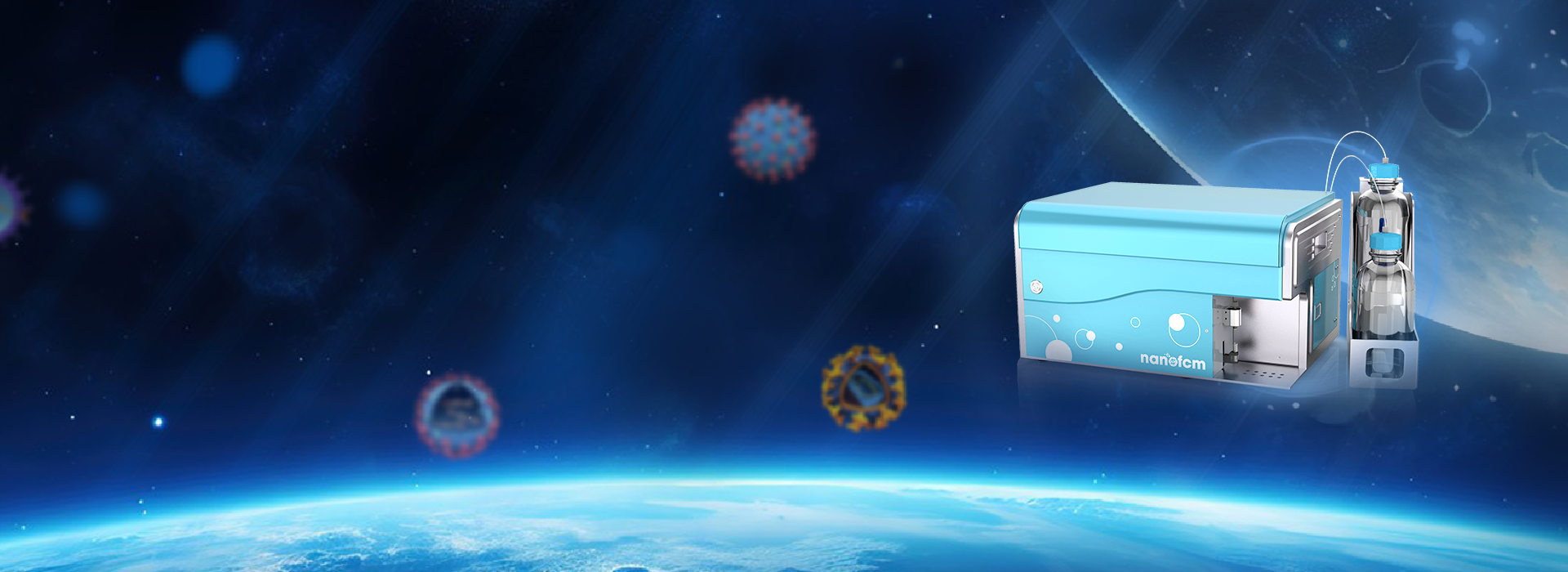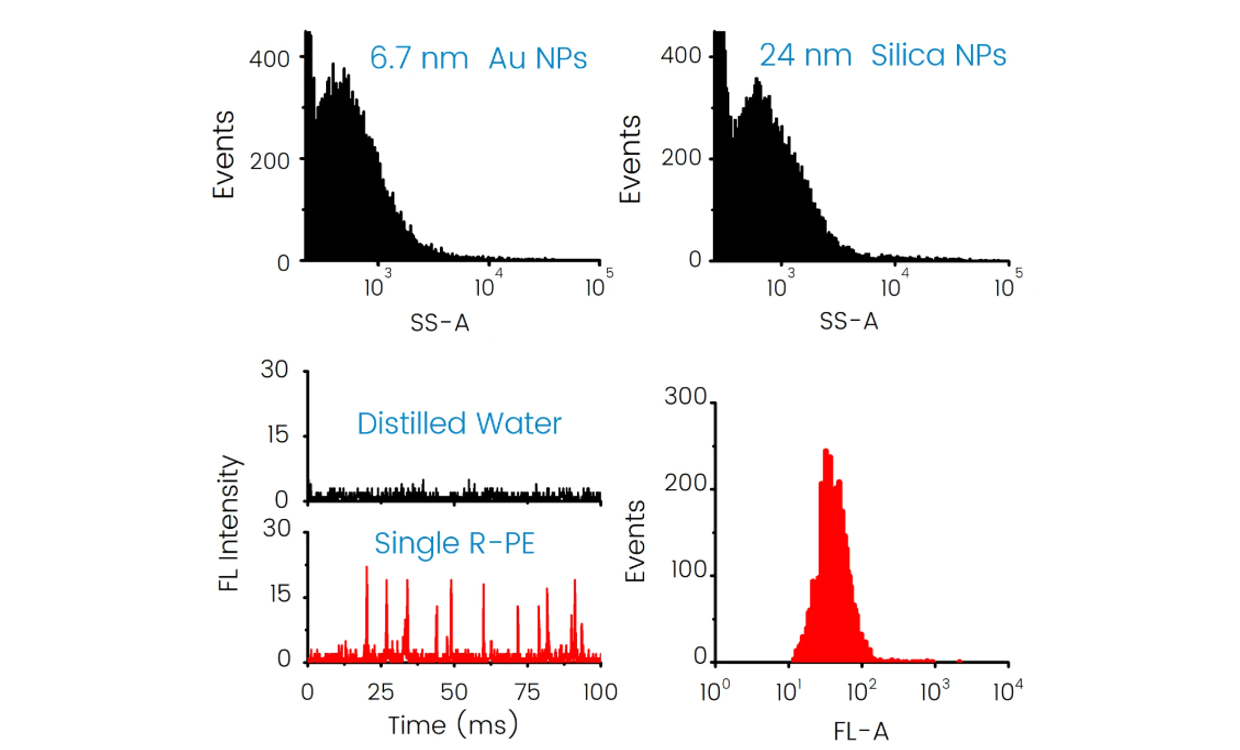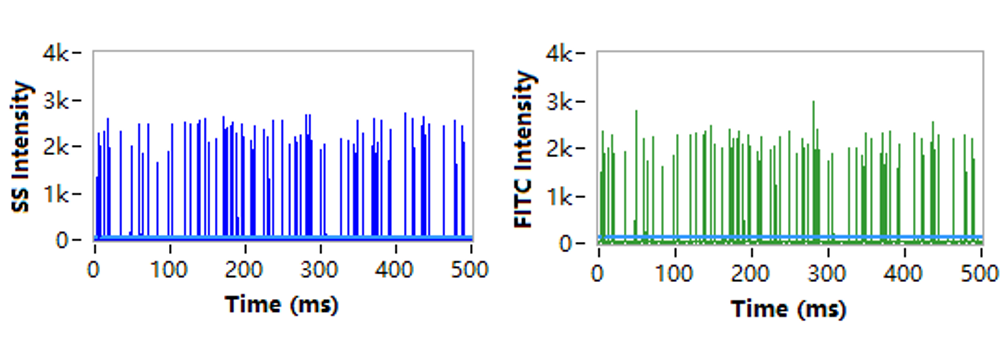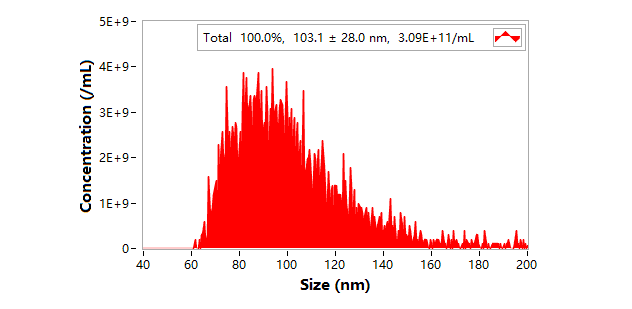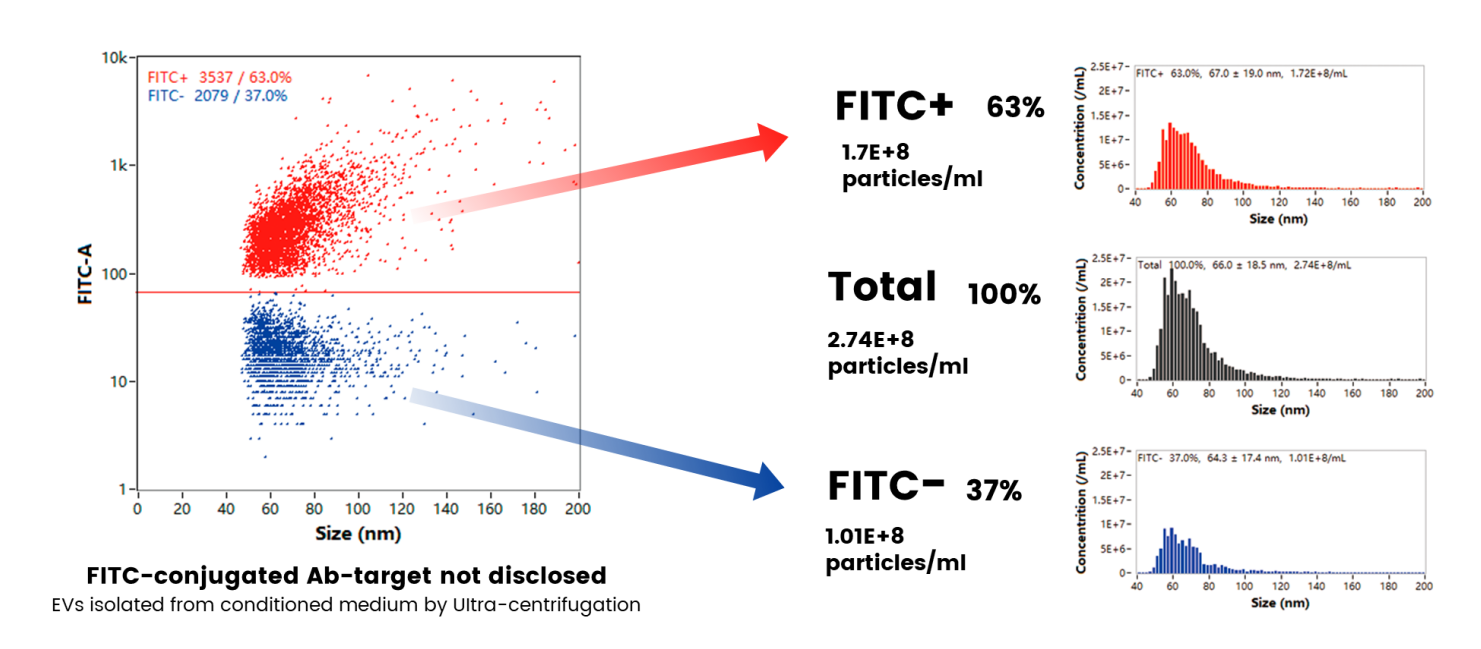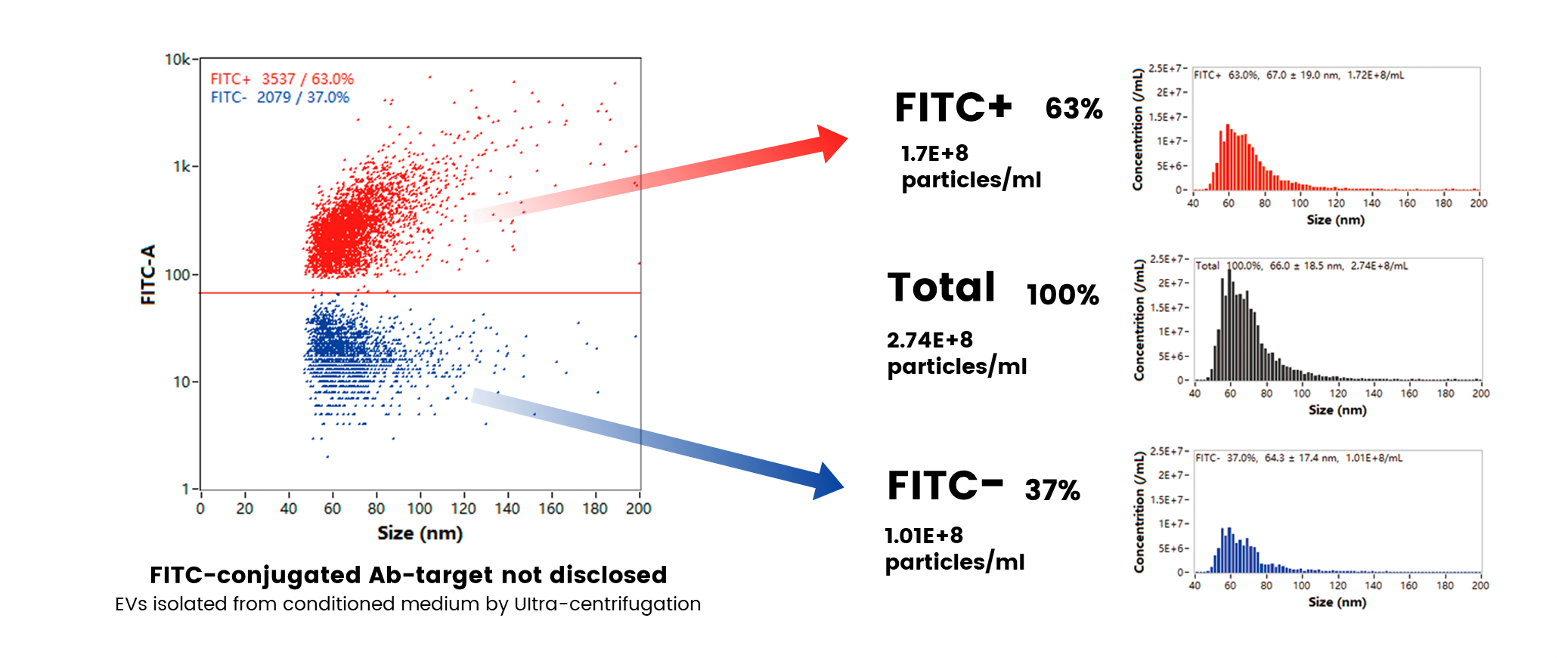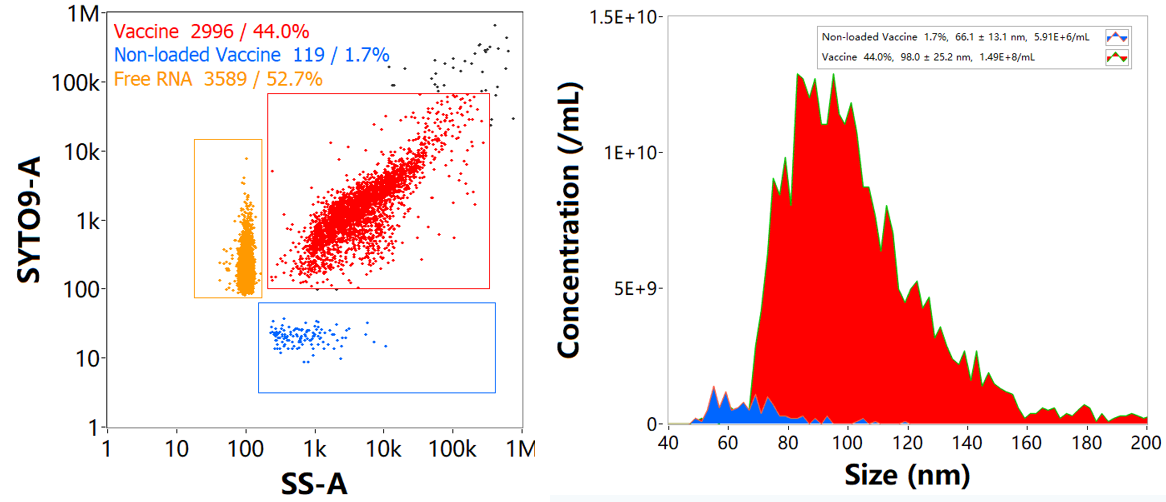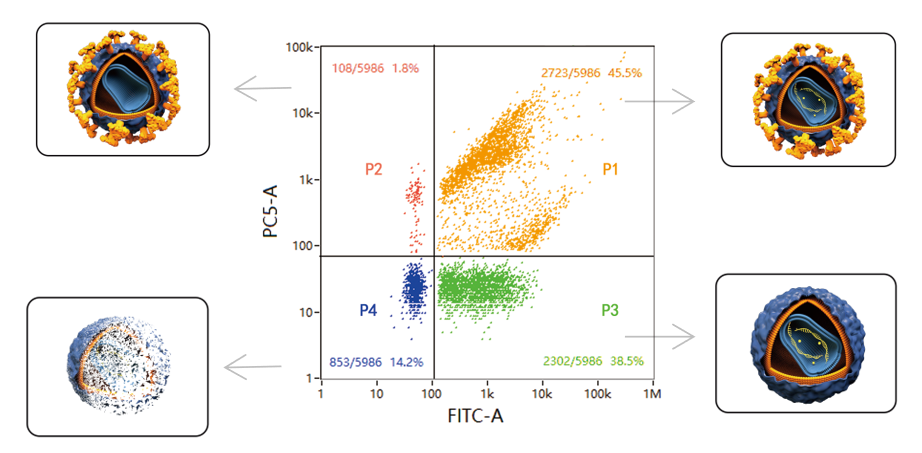Flow NanoAnalyzer
The Flow NanoAnalyzer paves a way for the mutiparameter analysis of the nanoparticles from 7 to 1000 nm with its unprecedented sentivity in scatterring and fluorescence detection. The Flow NanoAnalyzer delivers high-resolution data at the single-particle level to dicipher the subpopulations and compositions of various nanoparticles, such as extracellular vesicles, LNPs and virial vectors.
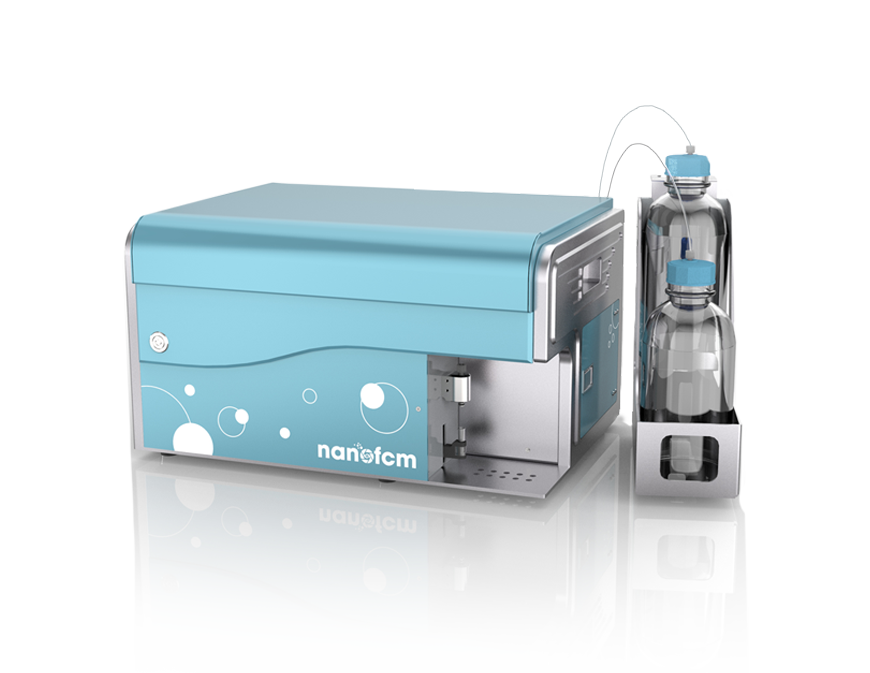

Superior Sensitivity
Scattering detection can be down to single gold and silica NPs as small as 7 nm and 24 nm, respectively.

Real-Time Traces
The real-time burst traces are provided to monitor the status of smaples and ensure the particles are detected individually.

Size and Concentration
Particle size distribution and concentration can be acquired in minutes without labels. The size results with a resolution and profile match well with those of TEM measurements.

Phenotyping
Combined with fluorescent labedling, multiple subpopulaiton for nanoparticles with biomarkers of low aboundance are identified.
Flexible Gating Strategy
Subpopulation, particle size, concentration, and function obtained from a single test
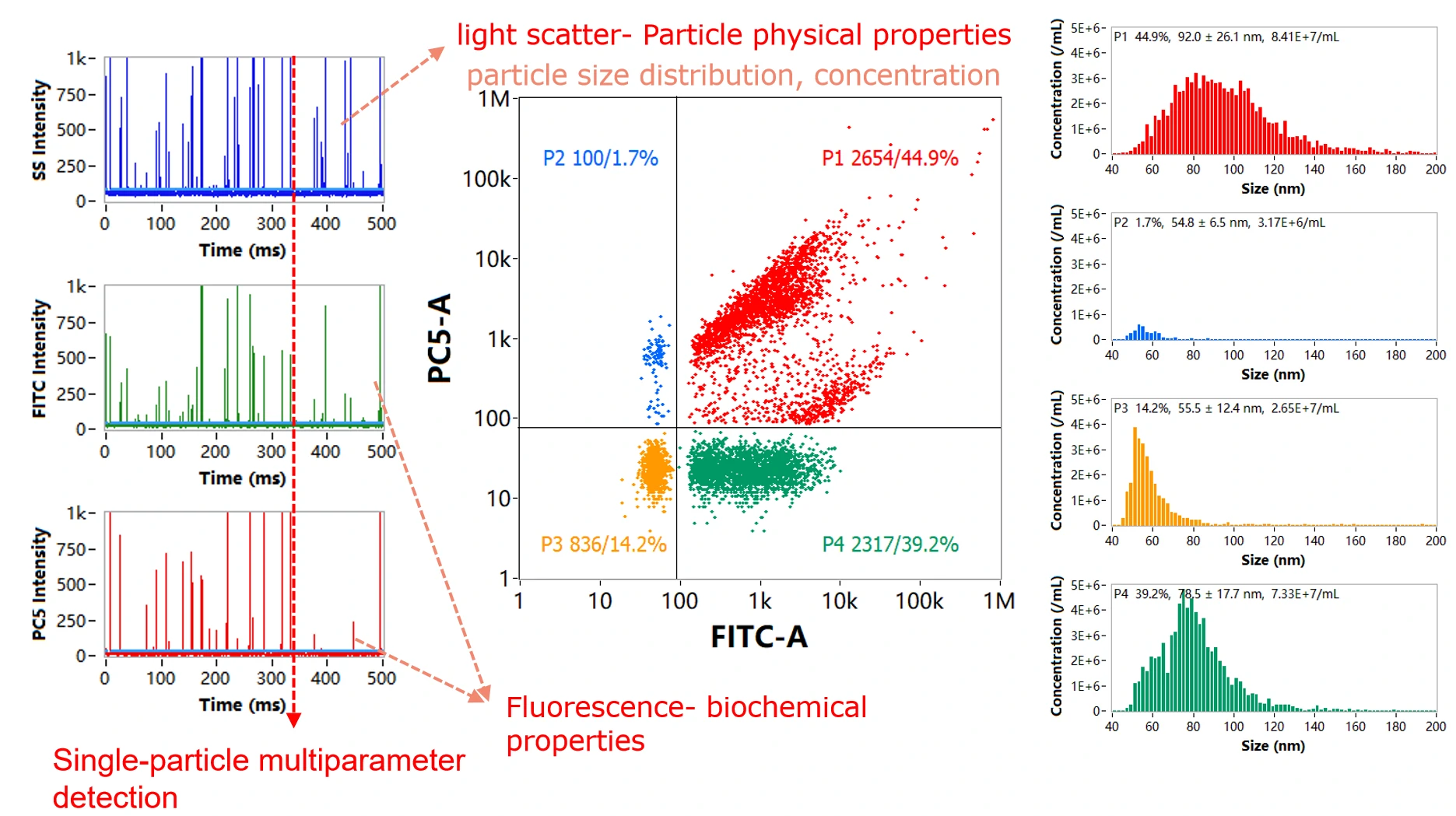
Size range: 7-1000 nm
Single / Multidisperse systems
The results reported for 2-3 min
10 μL sample as low as 1 μL of consumption
The resolution is comparable to the frozen TEM
Both Label free and labeled samples are applicable
The scattering was as low as 24 nm and the fluorescence aslow as single PE detection
The suspension status, keep the sample native state detection



